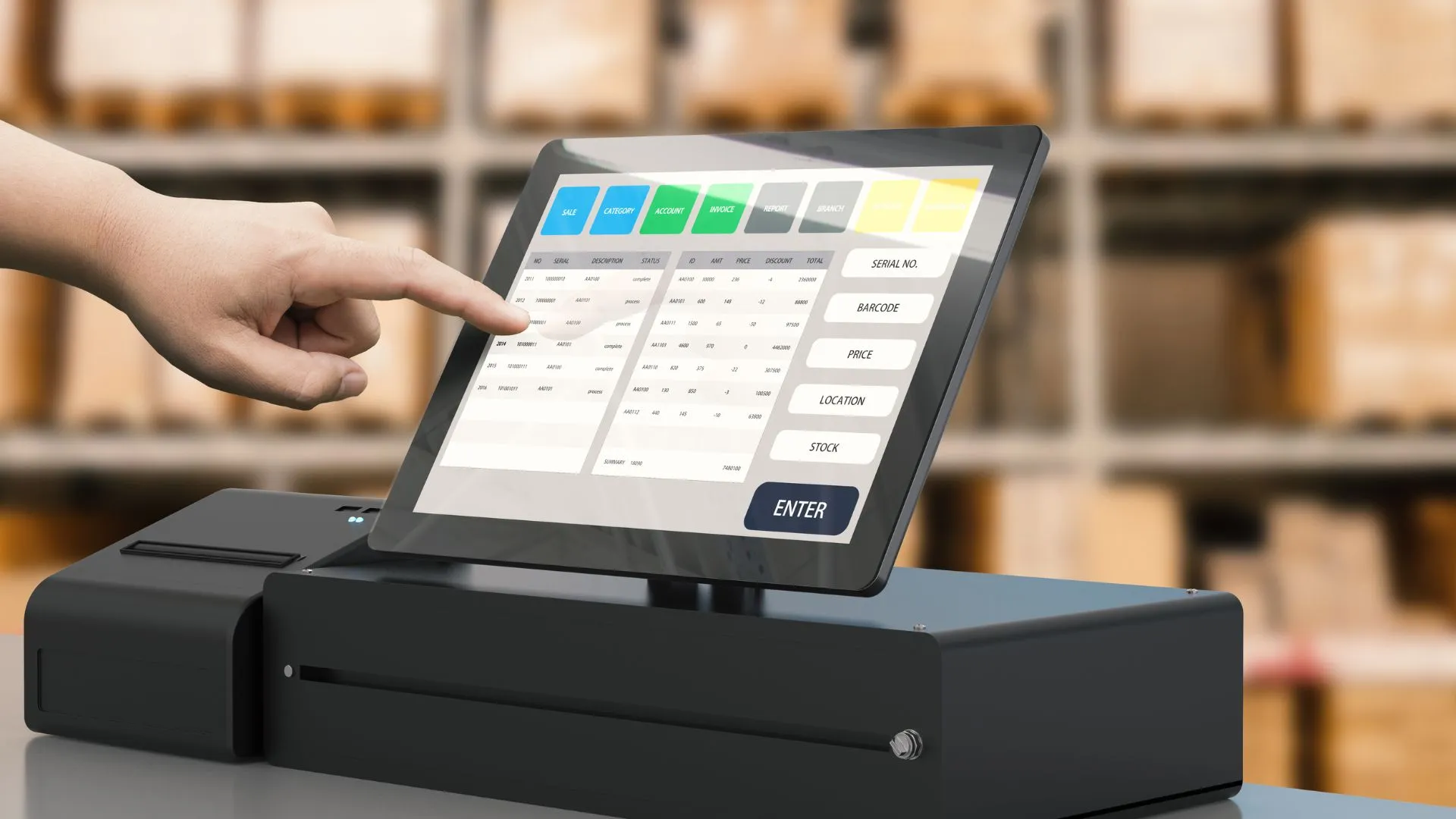Solution Architecture 101: The Essential Guide For SMBs, Mid-Market, And Enterprise Businesses
Creating a technical solution might seem straightforward—identify the business problem, select the tools, and deploy them. However, without a well-structured approach, many businesses struggle with inefficiencies and missed objectives. This is where solution architecture comes into play.
Solution architecture is about crafting a detailed blueprint that aligns software, hardware, and network components with your business goals.
A solution architect translates business requirements into technical specifications and ensures that each component—whether a cloud-based application, a data platform, or a mobile solution—fits seamlessly within the broader enterprise architecture.
In this guide, we’ll explore how to approach solution architecture to create value for your business. We’ll cover what solution architecture is, why it’s important, and how you can use it in your business.
What is Solution Architecture (SA)?
Solution Architecture (SA) serves as the blueprint for building tech solutions that precisely match the needs of a business. The aim is to address specific business challenges by integrating these various components into a unified solution that meets current objectives and is scalable for future needs.
When executed well, solution architecture produces a detailed plan or roadmap that guides the implementation, delivery, maintenance, and ongoing optimization of the technology landscape.
This roadmap bridges the different disciplines within an organization, linking enterprise architects, solution architects, and technical architects, all working toward a common goal.
One key goal of SA is to reduce the risk of project failure. SA often results in comprehensive documentation (often in a detailed architectural diagram or a written guide) that directs the technical teams throughout the implementation process.
When Should You Use Solution Architecture?
Solution architecture is essential in scenarios where aligning technology with business goals is critical. Below are five examples that illustrate when engaging in solution architecture, or bringing in a solution architect, is particularly beneficial:
Example 1: Digital Transformation Initiatives
When a business embarks on a digital transformation journey, moving from legacy systems to modern, cloud-based solutions, solution architecture is crucial. It helps map out the integration of new technologies with existing infrastructure, ensuring that the transition is seamless and that new systems support future growth without disrupting current operations.
Example 2: Complex System Integration
In projects involving the integration of multiple systems—such as CRM, ERP, and eCommerce platforms—solution architecture ensures that these disparate systems work together effectively. A solution architect would design a blueprint that allows these systems to communicate, share data, and function as a cohesive unit, enhancing overall business efficiency.
Example 3: Custom Software Development
When developing a custom software solution, solution architecture provides the framework for building a system that meets specific business requirements. By outlining the technical specifications, workflows, and data structures, solution architects help developers create a product that is scalable, maintainable, and aligned with the company’s long-term objectives.
Example 4: Scaling Operations
As a business grows, its technology needs evolve. Solution architecture plays a key role in scaling operations, whether it’s expanding data storage capabilities, increasing processing power, or integrating new functionalities. A well-designed solution architecture allows for growth without the need for a complete system overhaul.
Example 5: Regulatory Compliance Projects
In industries with strict regulatory requirements, such as finance or healthcare, solution architecture is vital for compliance. A solution architect designs systems that meet legal standards for data security, privacy, and reporting, while also aligning with the business’s operational goals. This reduces the risk of non-compliance and the associated penalties.
Why Is Solution Architecture Important For Businesses Of All Sizes?
Solution Architecture plays a central role in aligning technology with business goals. This alignment directly links technology decisions to the company’s broader objectives, driving meaningful progress. Each tech solution crafted through Solution Architecture is both functional and strategically sound.
Efficiency gains are a significant benefit of Solution Architecture. Analyzing current processes and systems helps streamline operations, eliminating redundancies and optimizing workflows.
Here are eight reasons why Solution Architecture is important for businesses of all sizes:
- Alignment with Business Goals: Technology decisions are strategically connected to the overall business objectives, which helps drive meaningful outcomes.
- Streamlined Operations: Solution Architecture improves efficiency by analyzing and refining business processes, reducing unnecessary steps, and optimizing workflows.
- Cost-Effective Implementation: Detailed financial insights provided by Solution Architecture allow for smart budgeting, helping businesses choose technologies that offer the best value without overspending.
- Risk Reduction: Potential challenges are identified early, allowing for smooth execution and reducing the likelihood of unforeseen issues.
- Scalability and Growth: Solutions are designed to grow alongside the business, accommodating future needs without requiring complete overhauls.
- Compliance with Regulations: Integrating industry regulations and security standards into the design process helps avoid legal and operational issues, keeping projects on track and within regulatory boundaries.
- Fostering Innovation: Solution Architecture helps businesses stay competitive and maintain an edge in the marketplace by incorporating the latest technologies and forward-thinking strategies.
- Effective Stakeholder Communication: Solution Architecture bridges the gap between technical and non-technical team members, fostering a shared understanding and ensuring alignment across the project’s objectives.
Solution Architecture sets the stage for long-term success by focusing on sustainable growth and innovation.
What is the Role of a Solution Architect?
A Solution Architect plays a pivotal role in guiding the design and implementation of technical solutions that align with specific business objectives. Their expertise is central to shaping a project’s blueprint, making sure that every component fits into the broader business strategy.
Collaboration is at the heart of this role. Solution Architects work closely with project managers, developers, and business leaders, forming a bridge between an organization’s technical and business sides.
Once the requirements are clear, the Solution Architect leads the design phase, crafting a solution that meets the immediate needs and sets the foundation for future scalability and adaptability.
Risk management is another critical aspect of the Solution Architect’s role. They evaluate project constraints, identify potential risks, and consider alternatives that might better serve the business objectives.
Communication is key to the success of any project, and Solution Architects excel at translating complex technical details into terms that stakeholders can easily grasp.
Beyond the initial implementation, Solution Architects continue to play a role in monitoring the solution’s performance. They make necessary adjustments so that the solution remains effective and aligned with evolving business needs. Their work is often documented in detailed architectural diagrams and written guides, providing a clear reference for future developments.
The role of a Solution Architect is comprehensive, encompassing design leadership, collaboration, technical guidance, risk management, effective communication, and post-implementation support. By integrating innovation and top-of-the-line strategies, they contribute to the ongoing success and growth of the organization.
What are the Key Components of a Solution Architecture?
A well-structured solution architecture involves several critical components, each playing a specific role in creating an effective and sustainable system. Let’s break down 10 key elements of solution architecture to understand their contributions.
- People: At the heart of any solution are the people involved. This includes everyone from the team members responsible for building and maintaining the system to the end-users and external partners who interact with it.
- Organization: The structure of the business, including its management hierarchy and workflows, shapes how the solution will be integrated and used.
- Processes: The solution must support and enhance the business operations, policies, and regulations in place. Whether it’s automating routine tasks or facilitating compliance with industry standards, the solution must align with how the business functions daily.
- Information: Managing data effectively is a cornerstone of any solution. This includes how data is collected (input), how it’s stored and protected, and how it’s used to generate valuable insights (output).
- Technology: The tools and platforms used to build and implement the solution—whether hardware, software, or communication tools—form the technological backbone of the architecture.
- Integration: A solution rarely operates in isolation. It must interact with other systems, both within and outside the organization.
- Security: Protecting data and maintaining compliance with regulations is non-negotiable. Security measures and controls are embedded in the architecture to safeguard sensitive information and meet legal/regulatory requirements.
- Scalability: As the business grows, the solution must grow with it. Scalability is about designing a system that can handle increasing demands without requiring a complete overhaul.
- User Experience: A solution is only as good as its usability. It should meet the needs of the end-users, offering an intuitive and efficient experience.
- Performance: Finally, the solution must perform reliably under varying loads. The system should maintain efficiency and speed during peak usage times or under normal conditions, providing consistent results without bottlenecks.
Solution Architecture vs. Enterprise Architecture vs. Technical Architecture
As organizations strive to align their technological capabilities with strategic business goals, understanding the distinctions and intersections between Solution Architecture, Enterprise Architecture, and Technical Architecture becomes essential.
While interconnected, these architectural disciplines serve distinct roles within an organization’s IT landscape, contributing uniquely to the overall success of technology-driven initiatives.
Enterprise Architecture (EA) provides the macro-level strategic framework that guides the entire organization’s IT infrastructure. It encompasses a holistic view of the business, focusing on aligning technology investments with long-term objectives. Initiatives under EA might include enterprise resource planning (ERP) transformations, application modernization, and post-merger IT integration. Enterprise Architects are responsible for maintaining a coherent architecture across the organization, ensuring that all technology decisions support the business’s overarching goals. Their work often involves frameworks like TOGAF or the Zachman Framework, which help structure the organization’s technological and business processes into a cohesive strategy.
Solution Architecture (SA) operates at a more tactical level, dealing with the design and implementation of specific technology solutions to address particular business challenges. While EA sets the strategic direction, SA translates these strategies into actionable, project-specific blueprints. For instance, when a company needs to integrate new regulatory requirements into its existing systems, a Solution Architect would design a compliant architecture that seamlessly fits within the broader enterprise framework. SA employs methodologies like the layered pattern, microservices architecture, and event-driven design to create flexible, scalable solutions. This role bridges the gap between high-level strategy and technical execution, ensuring that each project aligns with the organization’s long-term vision while meeting immediate business needs.
Technical Architecture (TA) delves into the granular details of implementing the solutions designed by SA. This discipline focuses on the technical specifications, configurations, and interactions of individual components within a system. Technical Architects are concerned with ensuring that all software, hardware, networks, and databases work together seamlessly to deliver the intended functionality. Their expertise is often domain-specific, dealing with the intricate details of technologies like cloud infrastructure, data security protocols, or network architecture. TA is integral to the success of IT projects, as it ensures that the technical implementation aligns with the architectural design, maintaining performance, scalability, and security throughout the project lifecycle.
In essence, while Enterprise Architecture provides the strategic direction and governance, Solution Architecture translates that strategy into specific, actionable plans, and Technical Architecture focuses on the detailed execution of these plans. Together, these architectural disciplines create a comprehensive approach to managing technology within an organization, driving both immediate project success and long-term business growth.
What are the Benefits of Solution Architecture?
Solution Architecture offers a strategic approach to aligning technology with business goals, delivering numerous benefits that can drive both immediate project success and long-term organizational growth.
- Enhanced Alignment Between IT and Business Goals: Solution Architecture bridges the gap between technical execution and business strategy. By translating business requirements into technical specifications, solution architects ensure that every technological initiative directly contributes to the company’s overarching objectives, creating a cohesive environment where IT and business are fully synchronized.
- Improved Resource Optimization: Through comprehensive analysis and design, Solution Architecture identifies and eliminates redundancies in systems and processes. This leads to more efficient use of resources—whether financial, technological, or human—maximizing the return on investment for each project and reducing waste.
- Increased Scalability and Flexibility: One of the core advantages of Solution Architecture is its focus on scalability. Solutions are designed with growth in mind, allowing the organization to expand its operations, adapt to new market conditions, or incorporate emerging technologies without requiring a complete overhaul of existing systems.
- Risk Mitigation and Strategic Planning: By evaluating potential risks during the design phase, Solution Architecture reduces the likelihood of project failures. It allows for proactive identification and management of challenges, providing a clear roadmap that guides the organization through complex implementations with minimal disruption.
- Enhanced Stakeholder Communication: Solution Architects play a crucial role in translating complex technical concepts into language that is accessible to all stakeholders. This clarity fosters better decision-making, alignment across teams, and a shared vision for project outcomes, ultimately leading to smoother implementations and stronger collaboration.
- Streamlined Integration of Systems: In a landscape where organizations rely on multiple technologies, the ability to seamlessly integrate new solutions with existing systems is invaluable. Solution Architecture facilitates smooth integration, ensuring that all components work together efficiently, thereby enhancing overall system performance and reliability.
- Long-Term Cost Efficiency: By focusing on designing sustainable and scalable solutions, Solution Architecture helps organizations avoid costly reworks and technical debt. It supports smarter investment in technology for long-term value and adaptability.
What Methodologies Are Used In Solution Architecture?
Solution Architecture employs a variety of methodologies to build efficient, scalable, and secure systems. Each method serves a specific purpose, optimizing the architecture for flexibility, performance, and maintainability.
Layered Pattern: This method structures software into distinct layers, each with its own responsibilities. This separation simplifies development, testing, and maintenance, allowing each layer to evolve independently.
Microservices Pattern: The system is divided into self-contained services, each handling a specific business function. This pattern enhances flexibility, as services can be developed, deployed, and scaled independently.
Event-Driven Pattern: Changes in the system are triggered by events. This approach is particularly useful for applications that require real-time processing, such as notifications or transaction updates.
Serverless Pattern:Software components are deployed on cloud platforms, which handle the underlying infrastructure. This reduces complexity and lowers operational costs by offloading server management to cloud providers.
CQRS Pattern: “Command Query Responsibility Segregation” separates the operations for writing and reading data. This pattern improves scalability and performance by allowing each operation to be optimized independently.
Agile Methodology: Emphasizes iterative development and continuous feedback. Agile promotes flexibility and adaptability, allowing teams to respond quickly to changing requirements.
DevOps Practices: Integrates development and operations teams to streamline the software delivery process. This approach fosters collaboration and accelerates the deployment of high-quality software.
Security by Design: Security considerations are embedded into the architecture from the beginning. This proactive approach mitigates risks and ensures that the system is protected against potential threats.
Performance Optimization: Focuses on designing systems for high efficiency and responsiveness. Techniques like load balancing, caching, and efficient resource management are employed to enhance performance.
Continuous Integration/Continuous Deployment (CI/CD): Automates the testing and deployment processes. CI/CD enables faster iterations and more reliable releases, reducing the time between development and production.
What Are Some Real-World Examples Of Solution Architecture?
Solution Architecture is pivotal in transforming business objectives into effective technical solutions. Here are some real-world examples that demonstrate its application across various domains:
Business Architecture: Aligning business capabilities with strategic goals, such as streamlining operations through process automation or integrating new services to expand market reach.
Information Architecture: Crafting user-centric interfaces that improve navigation and accessibility, thereby enhancing the overall user experience. This might involve redesigning a website or developing a new mobile app to improve customer engagement.
Information Security Architecture: Integrating security protocols into new systems from the ground up, such as implementing multi-factor authentication and encryption in a new financial application to protect sensitive data.
System Architecture: Designing comprehensive IT systems that automate complex business processes. For example, developing an integrated supply chain management system that connects suppliers, manufacturers, and distributors in real time.
Application Architecture: Structuring software applications for seamless performance and interaction. This might involve designing a microservices-based application to handle high transaction volumes efficiently in an e-commerce platform.
Technology Architecture: Developing IT infrastructure that supports new solutions, such as deploying scalable cloud environments to accommodate growing data needs or integrating advanced networking solutions for better connectivity.
Cloud Migration: Transitioning legacy systems to cloud platforms to improve scalability, reduce maintenance costs, and enhance performance. This could include moving an on-premises CRM system to a cloud-based solution to facilitate remote access and improve customer data management.
Digital Transformation: Overhauling outdated systems with modern technologies to drive innovation. This might involve replacing a traditional ERP system with a cloud-based, AI-powered platform to improve decision-making and operational efficiency.
Data Platforms: Building data ecosystems that enable advanced analytics and insights. An example could be designing a big data platform that aggregates and processes large datasets to support predictive analytics in retail.
Mobile Solutions: Developing or enhancing mobile strategies to meet evolving user needs, such as creating a mobile banking app that offers personalized financial advice based on real-time data analysis.
Get Help Implementing Solution Architecture For Your Business: Schedule A Free Consultation With Euvic Today
With Euvic’s proven expertise in Solution Architecture, every phase of your project is meticulously crafted to align with your strategic goals.
Euvic brings a unique blend of experience, technical expertise, and proven success to Solution Architecture. With 6000+ skilled software engineers, ranked among the top 5 globally, and a track record of thousands of delivered projects, we’re equipped to handle complex challenges with precision.
Our Smart Delivery Model combines US-based project management with top-tier Polish engineering, offering cost-effective, seamless solution delivery. Clear communication is key, with a dedicated local point of contact ensuring your goals are met efficiently.
We provide Managed Teams tailored to your project needs—no unnecessary overhead, just focused expertise driving results. This approach has led to a 92% retention rate and a 31% year-over-year growth, demonstrating our commitment to long-term client success. See some of our client case studies on this page.
From cloud migration to digital transformation, Euvic’s Solution Architecture services are backed by a robust methodology and financial strength, with 2022 revenues exceeding $300 million.
Get in touch with Euvic today for a free consultation. We’re your strategic partner in building scalable, efficient solutions that align with your business goals.
Euvic is a competitive advantage for us. The technical excellence that Euvic has brought is not easily matched and their support has become integral to our growth strategy.

Euvic is a competitive advantage for us. The technical excellence that Euvic has brought is not easily matched and their support has become integral to our growth strategy.

Euvic is a competitive advantage for us. The technical excellence that Euvic has brought is not easily matched and their support has become integral to our growth strategy.

Talk to Your Local Euvic Team

















.webp)







































































